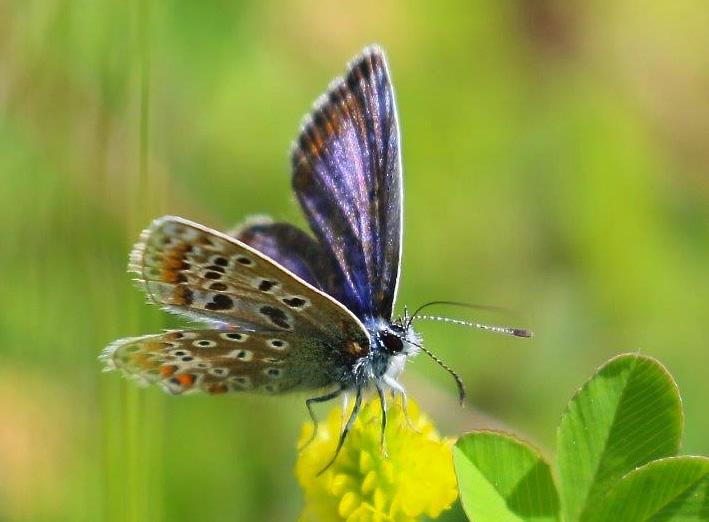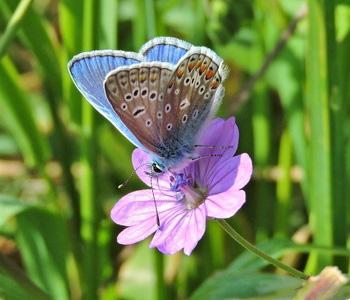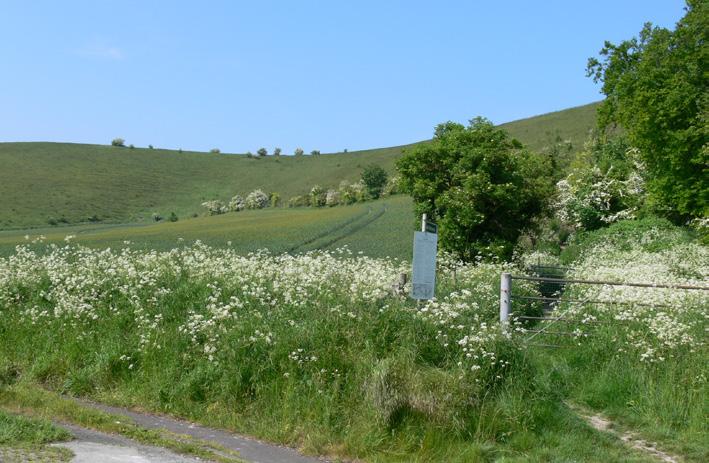
4 minute read
Success in Crete
Richard Stewart
Over many years I have found several advantages in belonging to ten different branches of Butterfly Conservation. One has been that my wife and I have enjoyed many holidays, mainly but not exclusively in Europe, with the Lincolnshire, Upper Thames and Suffolk branches. In these groups there were experts able to identify not just European butterflies but also a wide range of other wildlife. Three of these holidays, spanning the period from spring to early summer, were at Casa Guilla, high on a rocky outcrop in the Spanish Pyrenees. The owners advertised regularly in the national magazine but sold their property a few years ago. Many species were recorded close by, in the meadows and wasteland, though much of this was subsequently purchased for vineyards. Perhaps the most atmospheric moments were early mornings on the balcony, before the sun broke through the deep mist in the valley below, with calls from unseen birds, hoopoes and nightingales, quail, golden orioles and cuckoos. We travelled further afield and I can still remember that wonderful moment when I first saw an Apollo, in a meadow close to an old smuggling track not far from the border with Andorra. On these holidays I saw species that were relatively common though rare in Britain, including Wood White, Glanville Fritillary, Queen of Spain Fritillary and Large Tortoiseshell. A Suffolk Branch holiday to the Lake Kerkini area of Greece produced a very welcome Large Copper and even more varieties of blues, ringlets, hairstreaks and whites.
However, one magnificent species eluded me, the Two-tailed Pasha, the only European representative of a genus with a stronghold in North Africa. I don’t need to describe it further as Kevin Ling displayed a fine photo at our last AGM and this was subsequently reproduced on the back cover of the Autumn 2016 Suffolk Argus. One reason for not seeing it was its preferred coastal habitat and since we were going to Crete in late April and early May 2016 I thought there might be a possibility. I contacted our editor who thought it might be too early. The first brood is from May to June but we only had three days of May before returning home. The richly flowering meadows and roadsides where we explored produced many species, including Painted Lady, Swallowtail and Clouded Yellow. On May 3rd, our last day, we headed for the monastery of Ayia Triadha. It was a very attractive place but the church inside wasn’t to my taste. Most of the group went inside for a tour but I took a quick look at all the silver and gold ornamentation and decided to go elsewhere. I prefer my religion to be simple and lacking in ostentation, especially if there are beggars just outside the door. I sat in the sunshine, talking to a few in our group, when suddenly a large butterfly flew past. I quickly made my excuses and pursued it, fortunately seeing it land low down below the monastery wall. I took a quick distant picture, which fortunately was in focus, then was able to look though my binoculars long enough to verify the identification of the Two-tailed Pasha. Then it flew up and majestically over the monastery wall. It didn’t return and my only regret was that my wife Marie, still inside the church, didn’t see it.
Summer 2017 On My Travels... Kevin Ling visited Cotley Hill, Wiltshire in pursuit of the Marsh Fritillary (Page 21)
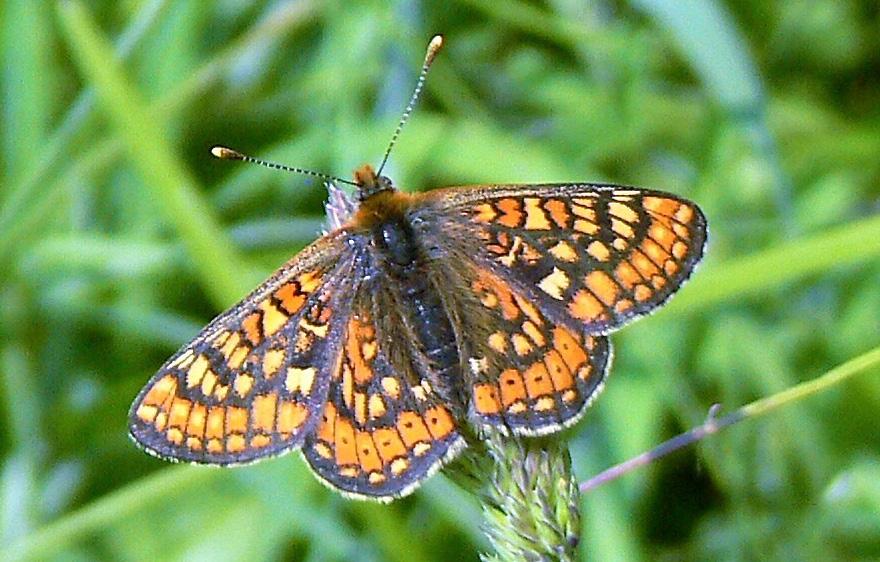
The path to Cotley Hill, Wilts Photos: Kevin Ling Marsh Fritillary at Cotley Hill
There have been some improved counts of 1st generation Wall, and Dingy Skipper this year
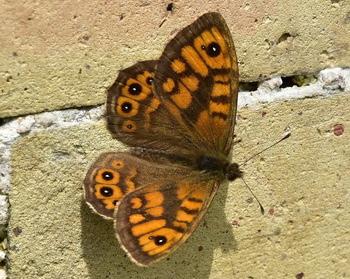
Wall on wall! Somerleyton Churchyard. Photo: David Pitt Dingy Skipper in the Kings Forest Photo: Trevor Goodfellow

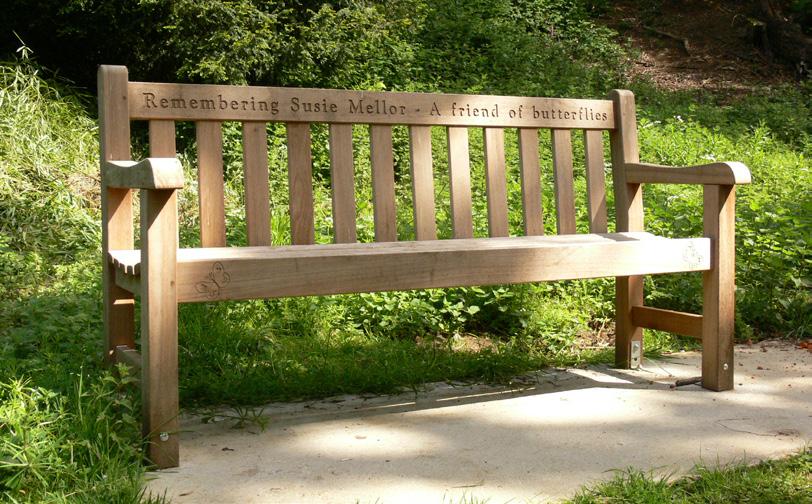
The Susie Mellor memorial bench sited in Brimstone Alley, Holywells Park, Ipswich. Funded by the Susie Mellor Legacy. Photo: Kevin Ling
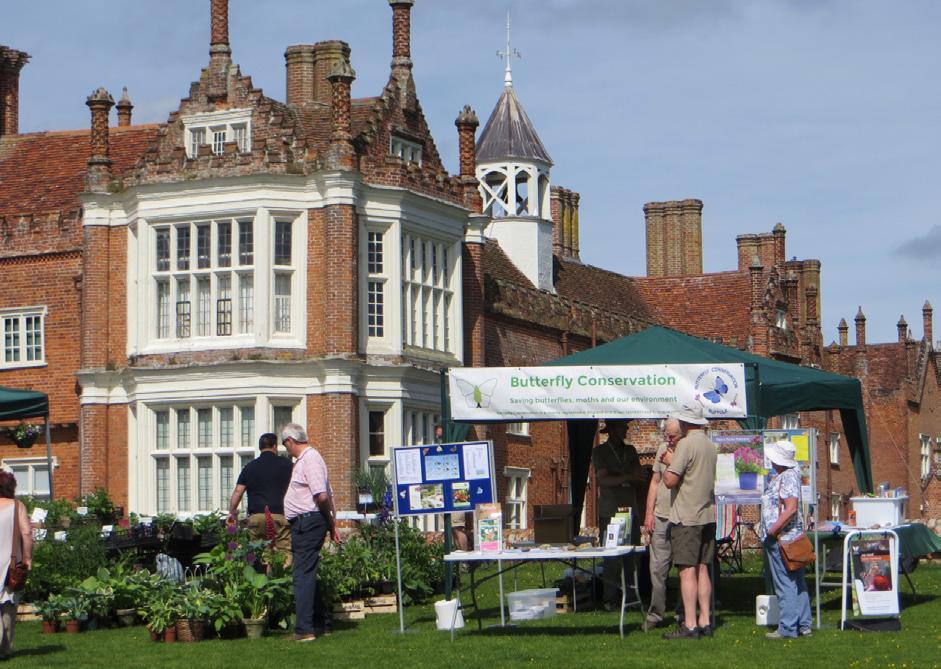
The Branch stand at the Helmingham Hall Heritage Plant Fair
Photos: Karen Brown
“Thank you,” to the volunteers who made our attendance possible.
Hummingbird Hawkmoth was seen on Catmint in the formal garden, but all the butterflies: Red Admirals, Peacocks, Small Copper, Holly and Common Blues, and a few ‘whites’ were in the meadow.
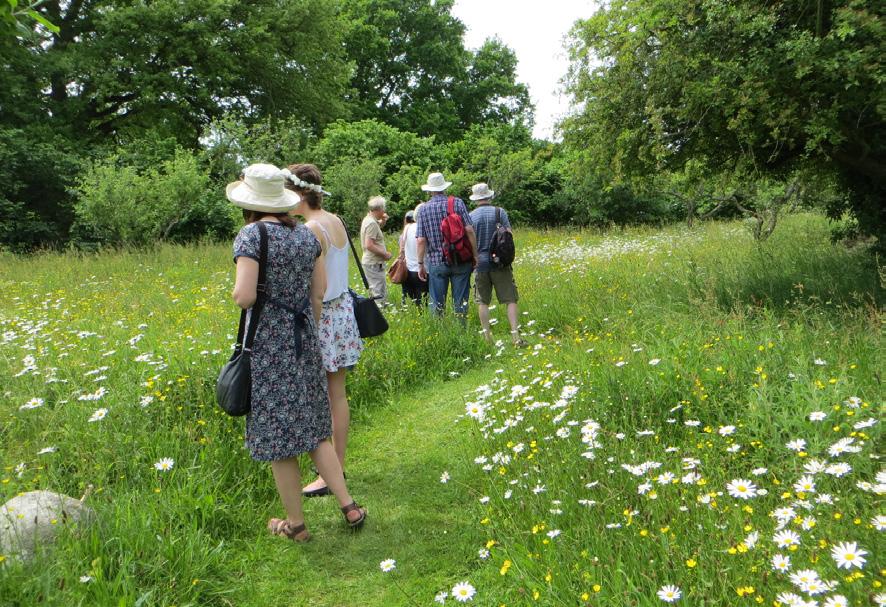
Common Blue butterflies
Note the heavy dark spots of this aberrant form, photographed by Trevor Goodfellow at Thurston Common Blue male, standard type, nectaring at Sizewell in late May. Photo: Charles Cuthbert
